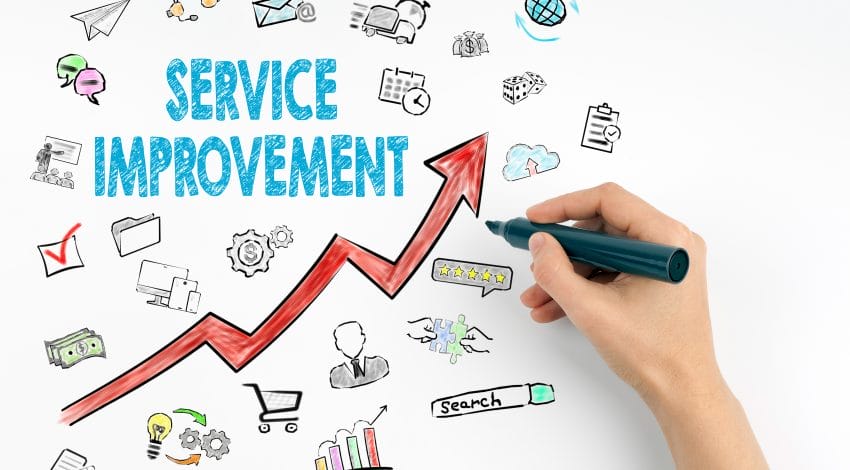Written By: Kristin Baird, RN, BSN, MHA
Baird Group has been working with healthcare organizations on customer service improvement since 1991 – over the years, as we’ve worked with healthcare organizations and healthcare leaders around the country, we’ve become pretty adept at quickly identifying when an organization’s service recovery strategy needs an overhaul—or when they don’t have one!
Here are the top three signs:
- Small things escalate
- As we review complaints from patients or family members, we see that many started out as small issues that could have been handled in the moment—they weren’t, and the issues escalated. Why does this occur? Usually because staff are not confident in their ability to address situations, or manage conflict, because they haven’t received the training they need to spot potential issues and address these appropriately.
- Passing the Buck
- Rather than deal with issues and requests directly, staff are handing off to others, resulting in unwanted—and unnecessary—delays that simply create more frustration. These situations tell us that the organization hasn’t worked to create a culture of ownership where staff feel empowered—and responsible—to take personal responsibility, and action.
- No evidence of closure or learning. – When a complaint is made, there is no evidence of follow-up or actions taken to close the loop. This tells us that there is no process in place to ensure that the loop gets closed, and no accountability. It also indicates a high likelihood that there is anything learned from the complaint.
It’s been said that a complaint is a gift. This is true on two levels. One – it allows you to fix a problem while the person in still on site. Two – it provides a learning opportunity that helps you learn and thus prevent future issues.
Avoidance is common in dealing with patient—or customer service—issues. It’s human reaction to avoid, or attempt to avoid, conflict. Unfortunately, by doing so, we don’t remove the issue; in most cases we simply aggravate, or escalate, it.
The Service Recovery Paradox
Conversely, studies have shown that when we act quickly to make resolution to satisfy the customer, or patient’s, issue, that patient becomes more loyal than if they’d never had an issue in the first place! This phenomenon is referred to as the Service Recovery Paradox. Research by the White House Office of Consumer Affairs tells us that, on average, customers will tell six times as many people about a bad experience as they will about a good one. Even worse, they’re increasingly likely to take their business elsewhere!
Why does addressing issues quickly and effectively result in enhanced loyalty and satisfaction? Because someone who has had a problem that is resolved promptly often feels more valued and respected. If you think about situations where you have been dissatisfied, and where the organization effectively responded to your needs, you can understand the power of this simple action.
Unfortunately, many organizations skip the hard work of creating a real service recovery strategy and settle for the perfunctory gift certificate as the sole extent of their service recovery effort.
A Service Recovery Strategy
Organizations need to have a strategy in place that is well-communicated and continually reinforced in order to help everyone understand what’s in their purview, what is expected of them, and how they can be part of the service recovery solution. This requires leaders to establish clear guidelines and provide adequate training to build staff awareness, skills and confidence.
We encourage healthcare organizations to establish a service recovery system—a three-pronged approach to equip staff at all levels in the organization to identify and take action on service recovery opportunities and to use the information they attain to make improvements. Three seemingly simple steps:
- Adopt a proactive position that includes guidelines for how to handle complaints along with training for both frontline staff and leaders
- Monitor and respond effectively and make sure that service shortfalls are documented
- Learn and improve – Continually monitor service issues and use the information for continuous
Today’s healthcare organizations have many competing priorities that can push service recovery strategies to the back burner. We can help. Contact us to learn how Baird can assist you in establishing a three-pronged approach to service recovery including solid training.
Copyright UseWant to use this article in your e-zine, newsletter, or on your Web site? You may, as long as you include the following statement:
Nurse, author, and consultant Kristin Baird, “Healthcare’s Customer Service Guru,” is the author of Raising the Bar on Service Excellence: The Health Care Leader’s Guide to Putting Passion into Practice (Golden Lamp Press, 2008), Reclaiming the Passion: Stories that Celebrate the Essence of Nursing (Golden Lamp Press, 2004), and Customer Service In Healthcare: A Grassroots Approach to Creating a Culture of Service Excellence (Jossey Bass, 2000). The Baird Group provides consulting, mystery shopping, and training services for improving the patient experience. To learn more, please visit https://baird-group.com or call 920-563-4684.

